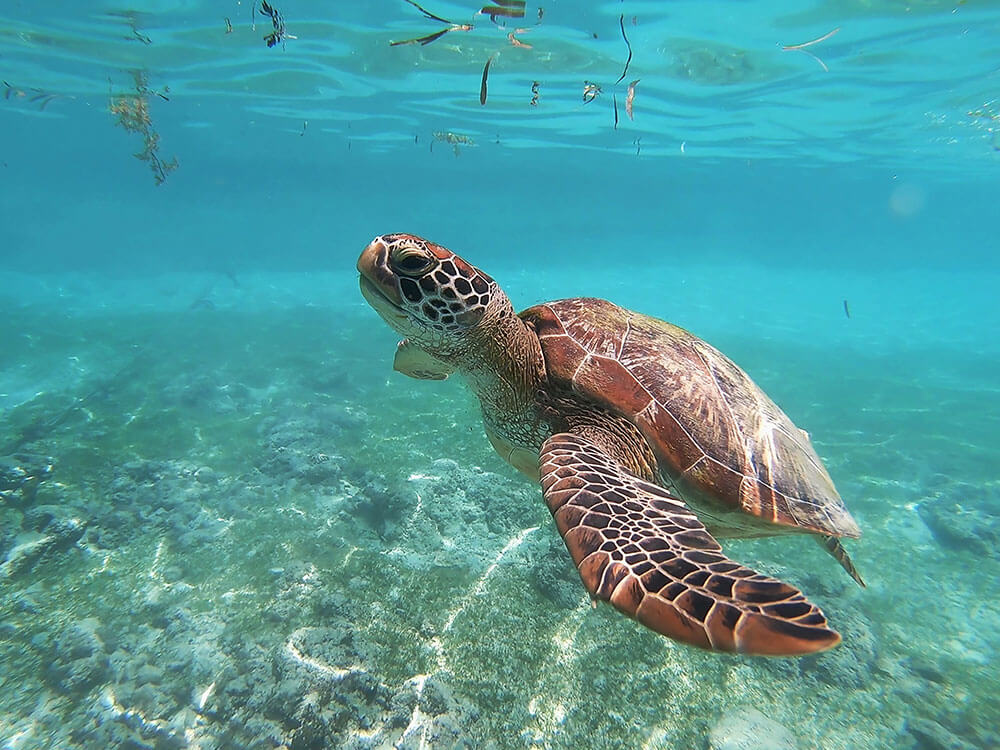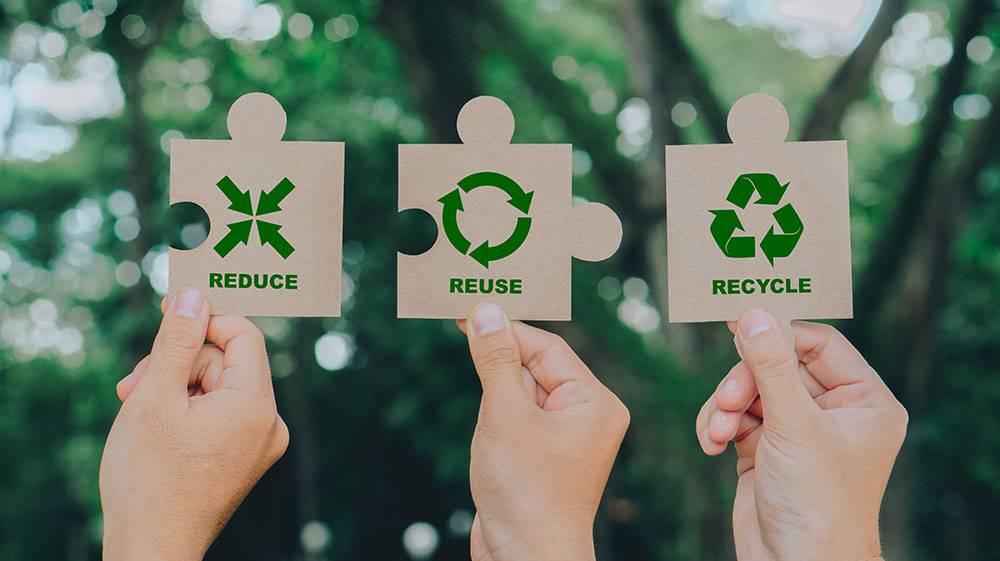 Plastic Pollution and Recycling
Plastic Pollution and Recycling
 Photo by Cristian Palmer on Unsplash
Photo by Cristian Palmer on Unsplash
Have you ever reflected on how everything on Earth is interconnected? At its core, this interconnectedness means that what we do has consequences for other living beings. Every organism shares a common origin and relies on numerous interactions with other species to survive. Each part of an ecosystem works together to maintain balance and health – something humans are largely responsible for managing.
Unfortunately, many of us don’t realize the impact of our actions on the planet. We continuously disrupt its equilibrium with no regard for other life on Earth. The continuous overproduction of virgin plastic is one of our many activities that endanger other species.
Today, we produce over 300 billion kilograms of plastic waste annually and 11 billion kilograms of this finds its way to our ocean1. Depending on its type, ocean plastic can either sink to the seafloor and join deep-sea creatures or remain afloat and eventually join the Great Pacific Garbage Patch, a massive island of trash in the ocean.
The United Nations Environment Programme (UNEP) reports that there are currently 75 to 199 billion kilograms of plastic in the ocean2. Sadly, marine animals are not aware of the dangers of ocean plastic, thus, about 100,000 of them die each year from either ingesting or getting entangled in plastic debris3.
Marine animals affected by ocean plastic pollution
Marine animals of all shapes and sizes are affected by plastic pollution with devastating consequences on their health. In fact, 88 percent of sea creatures across the globe have already been negatively impacted4. To better understand, here are 4 animals that are severely threatened by this man-made problem:
 Photo by Keith Hardy on Unsplash
Photo by Keith Hardy on Unsplash
1. Seabirds
Ocean plastic is often mistaken as food by seabirds. When they consume it, they become ill from the chemicals that leak out from plastics once they break down. The birds suffer from dehydration due to blockage in their digestive system, as well as a slowed metabolism or even death. Furthermore, a study conducted in 2019 showed that birds that ingest a large amount of plastic have low calcium levels in their blood and have high cholesterol and uric acid5.
It is also recently discovered that plastic ingestion causes severe scarring and inflammation in the digestive tract of seabirds. This disease is called Plasticosis, which was linked by researchers to multiorgan damage in flesh-footed shearwater seabirds during a study5. What’s worrying is that if not enough action is taken to stop ocean plastic, 99.8 percent of seabirds would have eaten plastic by 20506.
 Photo by Olga ga on Unsplash
Photo by Olga ga on Unsplash
2. Sea Turtles
Every year, approximately 1,000 marine turtles die after getting tangled up in plastic debris in the ocean, such as lost fishing nets, nylon fishing lines, six-pack rings from canned drinks, plastic balloon strings, and various plastic packaging7. However, this number is only based on turtles that have been found dead – thus, this number is most likely a gross underestimate.
It was also found that 52 percent of the world’s sea turtles have swallowed plastic8. This is because they often mistake plastic for food. For a foraging sea turtle, a flimsy plastic bag underwater can look like a delicious jellyfish. The chance of a turtle dying from ingesting a single plastic is 22 percent9 but even if it survives, factors like internal damage, malnutrition, and increased buoyancy can lead to reduced growth rates and reproductive output10.
 Photo by Todd Cravens on Unsplash
Photo by Todd Cravens on Unsplash
3. Whales
In 2019, a deceased young whale was found in the Philippines with almost 40 kilograms of plastic in its stomach11, which included plastic bags, rice sacks, plastic packaging, and tangles of nylon ropes. Some of these had been in the whale’s stomach for so long that they began to calcify. But this is not an isolated case! A lot of dead whales made headlines over the past years due to plastic ingestion. Although the cause of death of these whales varies, starvation due to plastic blocking the actual food from traveling to the intestine is one of the leading reasons.
Aside from the large plastic that whales ingest when they forage for food, they also consume a massive amount of microplastic by munching on their usual prey, such as krills or shrimp-like crustacean that feeds on microplastic. Blue whales are estimated to eat more than 10 million pieces of microplastic per day while humpback whales ingest as much as 200,000 pieces per day12.
 Photo by Francesco Ungaro on Unsplash
Photo by Francesco Ungaro on Unsplash
4. Corals
Coral reefs are some of the most important ecosystems on Earth. Sadly, they have been greatly affected by plastic pollution due to increased amounts of debris entering the ocean. Apart from the risk of ingestion, ocean plastic can smother corals and prevent them from receiving the sunlight and oxygen that they need to thrive13.
What’s even more alarming is that plastic waste in the ocean is also home to pathogens that cause diseases to marine species. When plastic touches the corals’ surface, it transfers the bacteria and makes the corals ill with diseases such as black band disease – a case where an infection eats away the corals’ tissue13.
Taking responsibility for our actions
The effects of plastic waste on other species are a reminder of just how interconnected everything on Earth is. What we do as humans impacts all creatures, and it’s up to us to be more conscious of our actions to protect the planet and its inhabitants.
The good news is that we can all help reduce the effects of plastic pollution by making simple changes in our daily lives, such as using reusable shopping bags, cutting down on single-use plastic, and properly disposing of waste. Additionally, raising awareness about the issue is essential to get more people involved in finding a solution. By doing our part, we can help save marine animals from extinction.
Let’s take action now to protect and restore the Earth before it’s too late! Visit plasticbank.com/pledge to learn how you can invest in your relationship with the Earth by stopping ocean plastic and alleviating poverty in vulnerable communities.
- “World leaders set sights on plastic pollution,” UNEP, February 16, 2022, https://www.unep.org/news-and-stories/story/world-leaders-set-sights-plastic-pollution
- From Pollution to Solution: A global assessment of marine litter and plastic pollution,” UN Environment Programme, 2021, https://www.unep.org/interactives/beat-plastic-pollution/
- “Plastic in our oceans is killing marine mammals,” WWF Australia, July 1, 2021, https://www.wwf.org.au/news/blogs/plastic-in-our-oceans-is-killing-marine-mammals
- Douglas Broom, “Ocean plastic pollution threatens marine extinction says new study,” February 21, 2022, World Economic Forum, https://www.weforum.org/agenda/2022/02/extinction-threat-ocean-plastic-pollution/
- Matthew Savoca, “‘Plasticosis’ in Seabirds Could Herald New Era of Animal Disease,” Scientific American, March 22, 2023, https://www.scientificamerican.com/article/plasticosis-in-seabirds-could-herald-new-era-of-animal-disease/
- Sid Perkins, Nearly every seabird may be eating plastic by 2050,” Science, August 31, 2015, https://www.science.org/content/article/nearly-every-seabird-may-be-eating-plastic-2050
- Marine turtles dying after becoming entangled in plastic rubbish,” EurekAlert, December 11, 2017, https://www.eurekalert.org/news-releases/917429
- University of Queensland News. “World’s Turtles Face Plastic Deluge Danger.” UQ News, 14 September 2015, https://news.uq.edu.au/2015-09-14-worlds-turtles-face-plastic-deluge-danger
- “What do sea turtles eat? Unfortunately, plastic bags,” World Wildlife Fund, https://www.worldwildlife.org/stories/what-do-sea-turtles-eat-unfortunately-plastic-bags
- Sarah E Nelms, et al. “Plastic and marine turtles: a review and call for research,” ICES Journal of Marine Science, October 9, 2015, https://academic.oup.com/icesjms/article/73/2/165/2614204
- Alejandra Borunda, “This young whale died with 88 pounds of plastic in its stomach,” National Geographic, March 16, 2019, https://www.nationalgeographic.com/environment/article/whale-dies-88-pounds-plastic-philippines
- Josie Garthwaite, “How much microplastic do whales eat? Up to 10 million pieces per day, Stanford research finds,” Stanford News, November 1, 2022, https://news.stanford.edu/2022/11/01/whales-eat-colossal-amounts-microplastics/
- Andrea Thomspson, “Where plastic goes, coral disease follows,” Scientific American, January 30, 2018, https://www.scientificamerican.com/article/where-plastic-goes-coral-disease-follows




